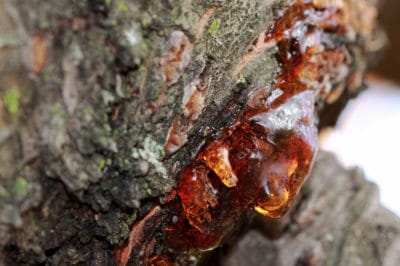Symptoms of Disease in Cherry Tree Bark
Cherry trees suffer from a variety of diseases which reduce the quality and quantity of fruit or completely kill the tree. If you love growing cherries, it pays to keep a close eye on the tree’s bark for signs of disease and to plant varieties resistant to common pathogens.
Fungal diseases and bacteria both cause problems which reveal themselves in the condition of the bark. Several of the most common cherry tree diseases involving the bark include:
- Phytophthora Root Rot. This fungal disease starts in the roots, but symptoms include unhealthy looking leaves which wilt, making the tree look like it is not getting enough water. As the disease progresses, dark areas appear on the bark at the base of the tree, and sap begins oozing from the wood.
- Bacterial Canker. This bacterial infection leads to cankers forming in the trunk of the tree which ooze an amber-colored substance during warm weather. Discoloration of leaves and fruit is another symptom, and whole branches can be affected and die.
- Peach Tree Borers. These insects get under the bark of cherry trees, creating tunnels, girdling the trunk or limbs. Wounds on the bark and branches also exude a gummy substance.
- Gummosis is not a specific disease, but a symptom of a variety of problems which can affect cherry trees. Gummosis causes a gummy substance to exude from wounds and cracks in the cherry tree bark. It can be caused by cankers and other pathogenic infections, but mechanical injury from weed-eaters and pruning can also result in this condition.
Preventing and Controlling Cherry Tree Bark Problems
Diseases affecting cherry tree bark are often serious and difficult to treat once they have become established. The best control for these problems is prevention.
Start by planting cherry trees which are best suited to the USDA climate zone where you live. Cherries grow in climate zones 4 through 9, but each variety has its own chill hour requirement and ideal zone for growing in.
Select cherry trees which are resistant to diseases common in your location. Also, planting the trees in deep, fertile, and well-drained soil goes a long way in preventing fungal problems from starting in the roots.
Pruning your cherry trees at the right time of year is also important for preventing fungal and bacterial infections from entering the bark.
